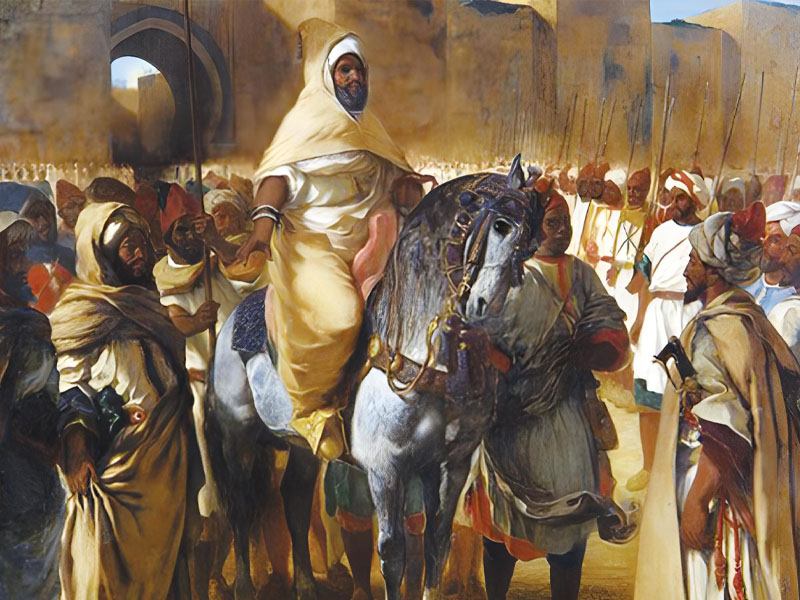The Andalusian influence on Moroccan clothing
Issue 45

By Dr Guillermo Gozálbes Busto, a Spanish historian and Orientalist
Translated by Idris Aljabruni
While examining some of the terms and clothes currently used in Morocco, we discerned an Iberian origin. The amazing urban life of Andalusia helped to create a bright, cultivated, elegant civilisation.
As Ibn Khaldoun wrote, the Bedouins were not familiar with tailored clothes; in general, the Bedouin population was characterised by its simplicity. The majority of the urban population in Morocco consisted of exiled Andalusians and it is no surprise that their influence is still evident. There was a constant flood of Andalusian immigrants to North Africa; sometimes there were large regiments, as was the case after King Fernando III recovered Seville, after the fall of Granada, or with the expulsion of the Moriscos in 1609 and later.
In other cases, their numbers were not large but the movement of isolated groups and individuals was continuous.
The Spanish Muslims and Jews who came to Morocco did not reside in the villages or the desert – where they were generally unwelcome – but in densely populated urban areas. Sometimes they built new cities, as they did in the north of Morocco with Chefchaouen and the city of Tétouan, which has been rebuilt.
These immigrants sometimes had a significant influence on the country's political process, and their artistic influences are evident. One good example is the city of the Marinid Fez, where the Andalusians’ sociological influence on the language and fashion is obvious.







































































